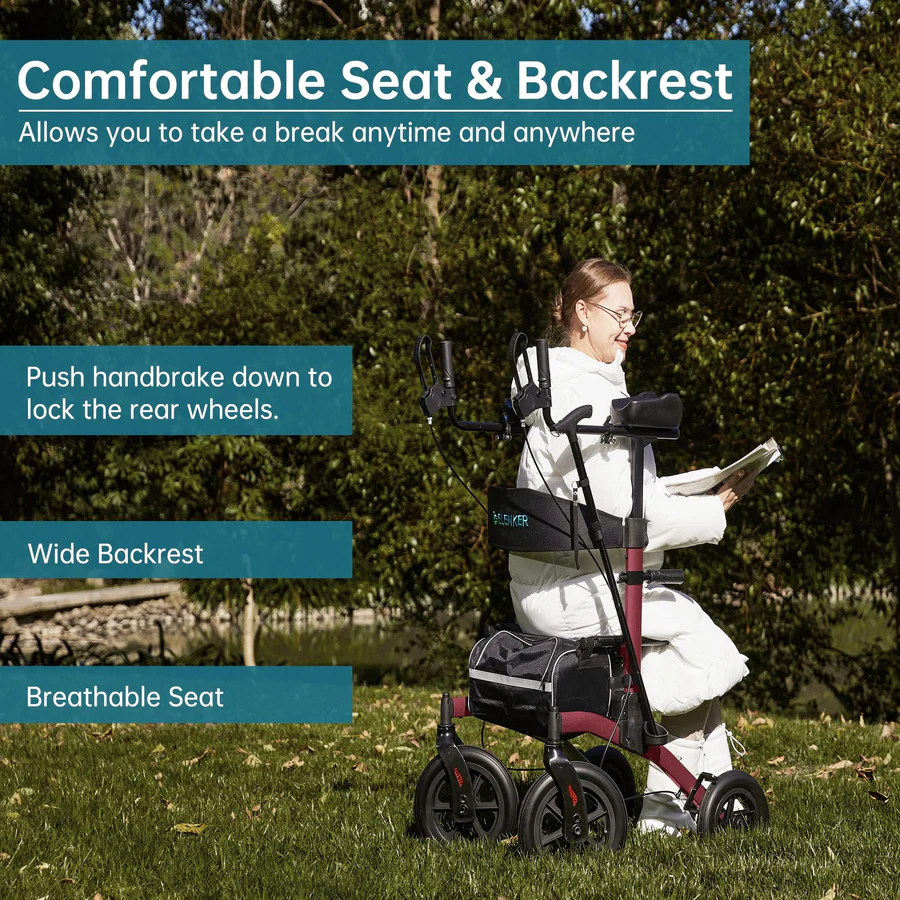Walking with a mobility aid like a walker can give you back a lot of freedom—but what happens when the sidewalk’s cracked, the lawn is lumpy, or the park trail turns into a mess of rocks and roots? Uneven ground can be a real challenge, but with the right approach, you can stay steady and confident while out and about.
This guide breaks down how to handle bumpy, slanted, or unpredictable surfaces when you’re using a walker. Whether you’re heading across gravel to get to your mailbox or navigating grass at a family picnic, we’ve got some solid tips to help you stay safe.
Know Your Walker First
Before we get into the tricky stuff, it’s important to know what kind of walker you’ve got. If you’re using a standard walker with no wheels, it’s going to be harder on rough terrain than one with wheels. A two-wheeled walker offers some glide without giving up too much control. Four-wheeled walkers are more flexible but can be tougher to control on uneven paths.
No matter which one you use, the goal is the same: keep your balance and move smoothly without tripping or tipping.

Tip #1: Bigger Wheels Make a Big Difference
If you’re planning to be outdoors often, walkers with large wheels (at least 8 inches) are the way to go. They roll over small bumps and dips much more smoothly than smaller ones.
Look for walkers labeled “all-terrain” or “outdoor-friendly.” These usually have thicker tires, wider frames, and better grip, which means less shaking and fewer surprises when the ground gets bumpy.
Tip #2: Take It Slow (No Rush, No Wrecks)
One of the best ways to stay safe is just to slow down. That might sound obvious, but when you’re trying to keep up with someone or just feeling impatient, it’s easy to move too fast—and that’s when accidents happen.
On uneven ground:
- Take shorter steps
- Keep your feet flat (no toe-walking!)
- Let your walker stay just a bit ahead of you—not way out front
You want to stay centered and balanced at all times. No leaning forward or trying to “catch up” to your walker.
Tip #3: Check the Ground Before You Step
Every surface is different, and not all uneven ground is created equal. Before you start walking across something new—like a gravel driveway, patchy grass, or a wooden ramp—pause for a second and scan the area.
Look for:
- Loose stones or uneven bricks
- Holes or dips in the grass
- Wet or muddy patches
- Uneven curbs or slanted sidewalks
When in doubt, test the ground with the tip of your walker before putting your full weight on it.
Tip #4: Stay Upright—Posture Matters
This one’s big: your posture can make or break your balance. If you hunch forward or lean too far on your walker, you’re more likely to slip or misstep.

Here’s what helps:
- Keep your back straight
- Look forward (not down at your feet the whole time)
- Use your arms to guide the walker—not to carry all your weight
- Adjust the walker height so the handles are level with your wrists when your arms hang naturally
Good posture makes it easier to react to uneven spots or changes in the ground—and that keeps you safer overall.
Tip #5: Use the Brakes (If You’ve Got Them)
If your walker has hand brakes—like most rolling walkers or upright models—use them! Brakes aren’t just for slowing down on hills. You can also lock them when standing still or adjusting your footing on rough surfaces.
On slopes or gravel, a rolling walker without brakes can get away from you fast. So don’t be shy about stopping and locking before moving again.
Tip #6: Avoid Tilted or Crowded Paths
Sometimes, the issue isn’t the ground itself but the angle or space. Sloped sidewalks, narrow trails, or paths with lots of obstacles (rocks, roots, yard décor) make it harder to walk safely.
If possible:
- Stick to the flattest, widest route
- Go around rather than over obstacles
- Don’t try to walk sideways or angle your walker—keep it aligned with your steps
Crowded areas can be just as tricky. If your walker wheels get caught or don’t have room to roll, your whole movement gets thrown off.
Tip #7: Know When to Ask for Help
There’s no shame in asking someone to lend a hand, especially when the ground is unpredictable. Whether it’s a caregiver, friend, or family member, an extra set of eyes (or arms) can help guide your walker and steady you during trickier parts of a walk.
Even just walking beside someone can give you the confidence to tackle new terrain. And sometimes? It’s okay to say, “Nope, not worth the risk today.”
Bonus Gear to Consider
Want to make your walker even more outdoor-ready? Here are a few helpful add-ons:
Walker skis or glides: These attach to the back legs of a standard walker to help it slide better on rough ground
All-terrain wheels: Wider, rubbery wheels with better grip for grass, gravel, or sand
Walker tray or pouch: Keeps your hands free so you can focus on stability
Umbrella or shade cover: For those sunny (or rainy) walks through the park
Make sure anything you add doesn’t mess with the walker’s balance or make it harder to maneuver.

Uneven ground doesn’t have to keep you stuck inside. With the right walker, a few adjustments, and a bit of patience, you can stay safe and steady on all kinds of surfaces—from bumpy backyards to city sidewalks.
Remember: it’s not about rushing or pushing your limits—it’s about moving smart and staying confident. So grab your walker, check the path, and enjoy the freedom of getting out there, one step at a time.

